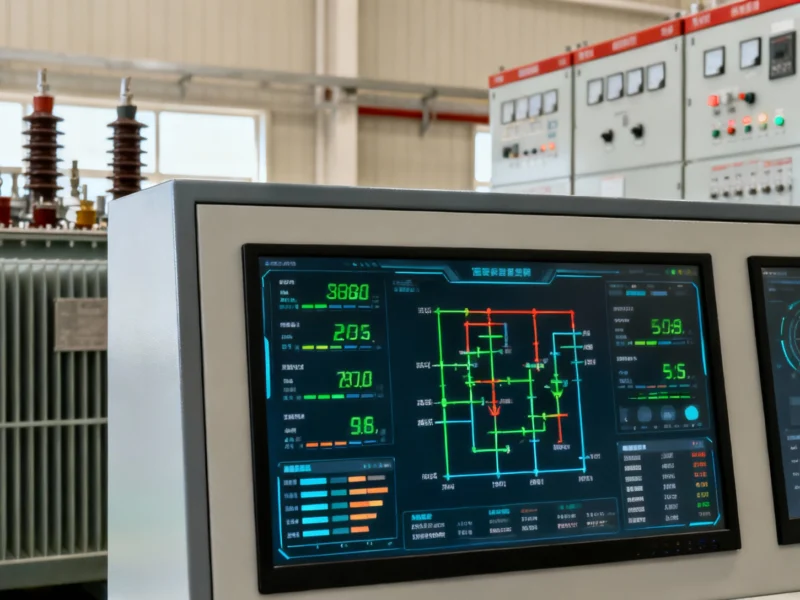According to SamMobile, Samsung posted a 32.5% increase in profitability for Q3 2025, marking the company’s strongest performance in three years. The South Korean tech giant achieved 21% higher profit compared to last year, driven by a 19% improvement in semiconductor chip sales that resulted in all-time-high quarterly revenue for its memory business. Key drivers included strong sales of server SSDs and HBM3E chips for AI servers, while the Galaxy Z Flip 7 and Galaxy Z Fold 7 contributed to an 11% revenue increase from Q2 2025. The company confirmed it has already shipped HBM4 chip samples to key clients and plans to ramp up 2nm chip production while optimizing manufacturing costs. This impressive turnaround suggests Samsung’s strategic focus is yielding significant results.
Table of Contents
The AI Chip Revolution Reshapes Samsung’s Fortunes
Samsung’s dramatic recovery highlights how fundamentally the AI boom is reshaping semiconductor markets. The company’s success with HBM3E chips—high-bandwidth memory specifically designed for AI servers—represents a strategic pivot away from commodity memory products toward specialized, high-margin components. This shift couldn’t come at a more critical time, as traditional memory markets have suffered from cyclical downturns and price pressures. The fact that Samsung is already sampling next-generation HBM4 chips indicates how rapidly this segment is evolving and how aggressively the company is pursuing leadership in AI infrastructure. Unlike previous cycles where Samsung competed primarily on manufacturing scale and cost, the AI era demands both technological innovation and deep partnerships with cloud providers and AI chip designers.
Navigating an Intensifying Competitive Landscape
Samsung faces formidable competition on multiple fronts that the earnings report only partially reveals. In the HBM market, South Korean rival SK Hynix currently dominates with an estimated 50% market share for AI memory, having secured early partnerships with NVIDIA. Meanwhile, in the foundry business where Samsung plans 2nm production ramp-up, the company trails TSMC, which commands over 60% of the advanced semiconductor manufacturing market. The timing of Samsung’s recovery is crucial—the company needs to capitalize on current momentum to close these competitive gaps before the next industry downturn. Success will depend not just on manufacturing prowess but on building ecosystems around its Exynos mobile processors and convincing major AI companies to adopt its memory solutions at scale.
Strategic Implications Beyond the Numbers
The emphasis on high-end smartphone sales, particularly the Galaxy Z foldable series, reveals Samsung’s broader strategy of premiumization across its product portfolio. This approach creates natural synergies—success in premium smartphones builds brand equity that supports semiconductor ambitions, while advanced chip technology enables differentiation in mobile devices. However, this high-end focus carries risks, including vulnerability to economic downturns that typically affect luxury goods first. The company’s optimistic outlook assumes continued strong demand for both AI infrastructure and premium consumer electronics, which could be tested by macroeconomic headwinds or shifts in AI spending patterns.
The Manufacturing Execution Challenge
Samsung’s plans to improve “fabrication plant utilization and optimizing production costs” hint at ongoing operational challenges that don’t appear in the glowing earnings headlines. Semiconductor manufacturing, particularly at advanced nodes like 2nm, involves extraordinary complexity and capital intensity. Yield rates—the percentage of functional chips per wafer—can make or foundry profitability, and Samsung has historically struggled to match TSMC’s consistency in this area. The company’s simultaneous focus on cutting-edge memory, advanced foundry services, and mobile processors spreads engineering resources thin across multiple demanding technological frontiers. Success will require exceptional execution across all these domains simultaneously, a challenge that has proven difficult even for well-resourced competitors.
The Road Ahead for Semiconductor Leadership
Looking beyond the current quarter, Samsung’s trajectory will be determined by several factors not fully captured in the earnings announcement. The company’s ability to scale HBM4 production and secure design wins with major server and AI accelerator manufacturers will be crucial for maintaining momentum. Meanwhile, the promised Exynos 2600 represents a critical test of Samsung’s mobile processor ambitions after mixed results with previous generations. Perhaps most importantly, the company’s massive investments in 2nm technology must deliver competitive performance and power efficiency to attract leading-edge customers away from established foundry partners. For Samsung, this earnings report represents not just a recovery but the beginning of a multi-year strategic transformation that will determine its position in the rapidly evolving technology landscape.
Related Articles You May Find Interesting
- AI-Powered Spatial Mapping Reveals Bladder Cancer’s Hidden Architecture
- Google Play’s 2-Year Window: A Developer’s Temporary Freedom
- Samsung’s Browser Gambit: Can Mobile-First Strategy Challenge Chrome’s Throne?
- The Green Energy Tipping Point: Economics Over Politics
- Trump-Xi Trade Thaw: Fentanyl, Rare Earths and Strategic Gambits



